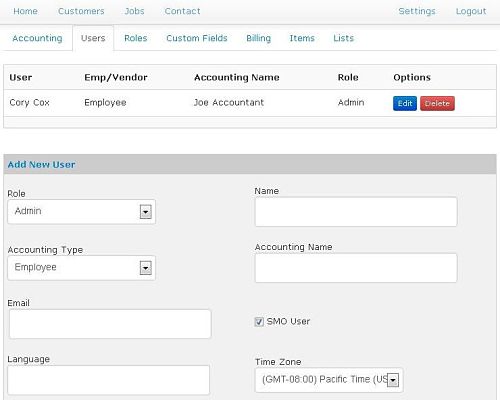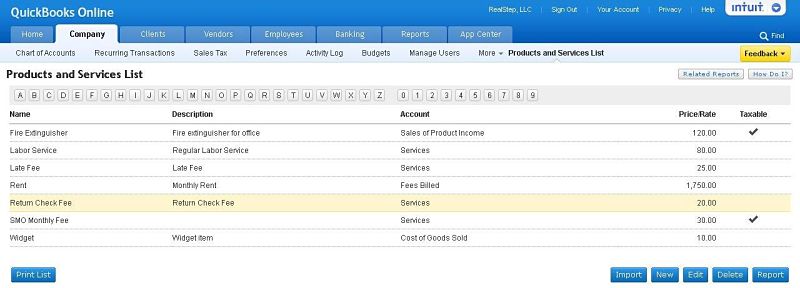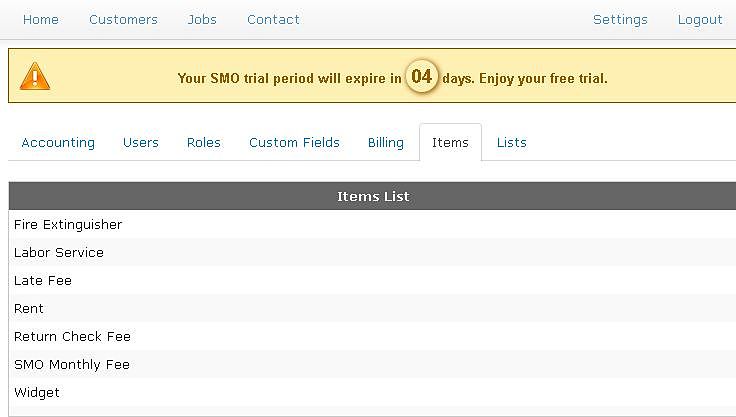SMO Getting Started
Back to SMO main page.
Overview[edit]
Before delving into SMO's more complex features there are a number of steps to take that will make your experience with SMO much smoother. Follow the below steps to set up some standard roles and items in SMO; this is the first step you must take before creating a database of customers and generating work orders, invoices, etc. Without a database of roles and items SMO has limited functionality.
Creating Roles[edit]
Go to "Settings" > "Roles" > "Add New Role" The roles added are up to the user, but a few suggestions are outlined below.
| Role | Customer | Jobs | Job Times | Contacts | Reports | Settings |
|---|---|---|---|---|---|---|
| Admin | All | All | Read/Write | All | With-Pricing | All |
| Tech | All | All | Read/Write | All | With-Pricing | None |
| Sales | All | Read-Only | Read/Write | All | Without-Pricing | None |
| Customer | Read | Add/Read | None | Read | None | None |
Creating Users[edit]
Now that you have some roles defined you can create users so that your techs and sales staff can use SMO. When you create a user they will receive an email notifying them that they have an account in SMO and that they should log in and create their password. To create users go to "Settings" > "Users" > "Add New User"
Creating Items[edit]
When you create a job for a customer you can assign items to that job. Items can be a product you sell or a service that you supply, like 2 hours of labor. The items are what the customer will be billed for when the job is invoiced. To look at your items list go to "Settings" > "Items". SMO will come with a generic item to use for trial purposes. All other items must be imported from QuickBooks Online.
To create/edit items in QuickBooks Online:
- Sign in to QuickBooks Online
- Click on "Company" tab
- Click on "More" > "Lists"
- Click on "Products and Services List"
- Alter your items list as suits your needs
Now to import those items to SMO:
- In SMO click on "Settings"
- Click on "Accounting"
- Connect with QuickBooks Online if your account is not already connected
- Click "Sync Items Now"
- Click on "Items" to verify that your items have been synced
Creating Lists[edit]
Lists are another important part of SMO that allow you to customize the way you classify your customers and describe the status of jobs. To view your lists go to "Settings" > "Lists" .
Some typical business types to enter into your lists are:
- Residential
- Government
- Commercial
Some job statuses you might want included in your lists are:
- Open (this comes as a default elsewhere in SMO)
- Assigned
- In Progress
- Awaiting parts
- Invoiced
- Closed
Now you're ready to use the rest of SMO to its full potential. Some things to start with are creating a customer, creating a job, assigning items to the job and then invoicing and closing that job.



